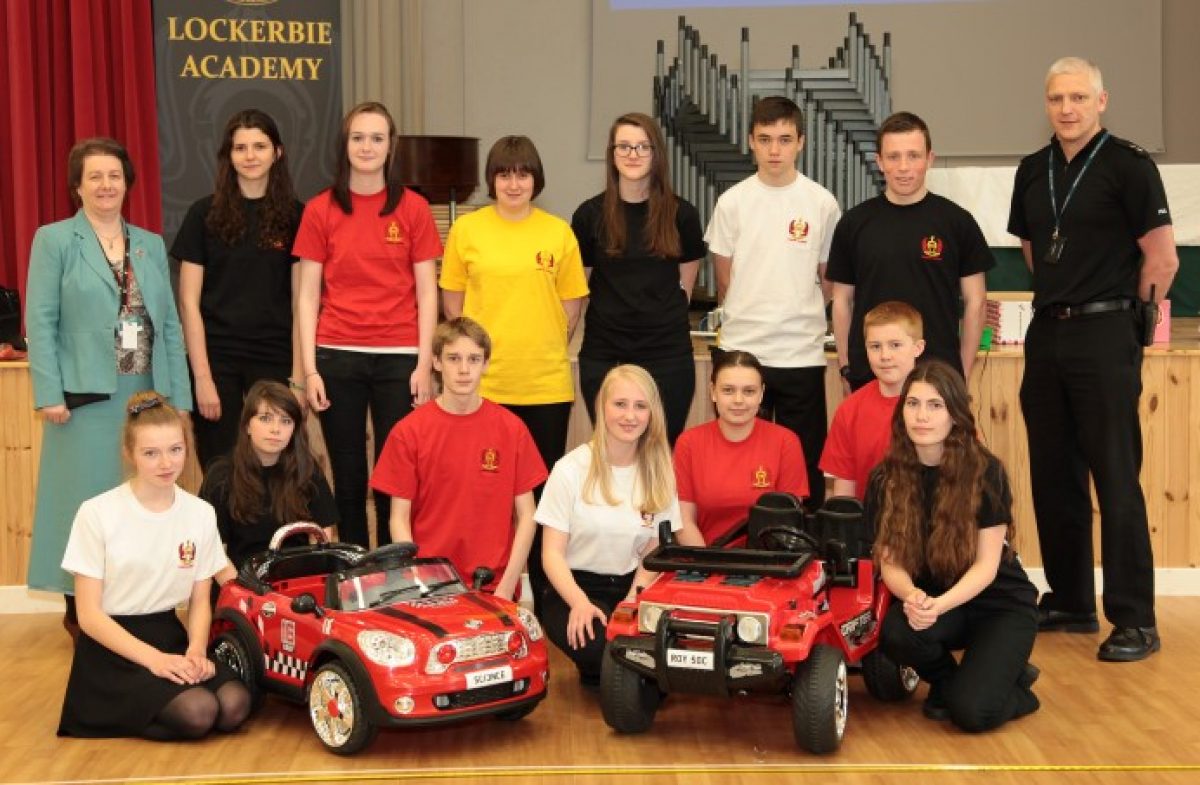Be A Road Crash Investigator is a partnership project with Police Scotland and funded by the Royal Society and the Radcliffe Trust, with support from Scottish Schools Education Research Centre (SSERC).
The project is designed for use across all levels of Physics.
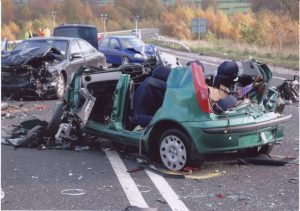
Following on from a high profile fatal crash in the region in which three young people were killed it was felt that more education needed to be carried out to illustrate to young people the dangers of driving fast on the roads network. At the same time the methods used to prove the speed and behaviour of the vehicles prior to the crash were found to be highly pertinent to pupils who were studying maths and physics at school.
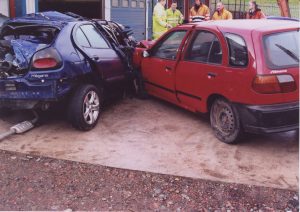
Mrs Physics attended a meeting at SSERC and was supplied with reaction timers that were used in Physics classes to provide examples of stopping distances. This sparked an interest in Road Safety.
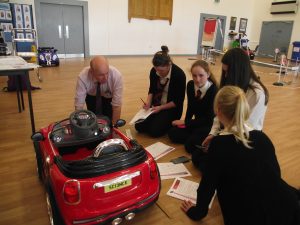
At the advice of Gregor Steele of SSERC, she contacted Kate Wheaton at Road Safety Scotland, who put her in touch with Inspector Neil Hewitson of what was then Dumfries and Galloway Constabulary.
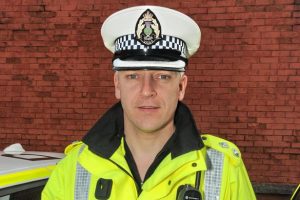
After a period of communication, Mrs Physics recommended Inspector Hewitson to SSERC for road safety outreach and to give talks on the real life applications of physics and the equations of motion. From this, a successful project was born.
A four tier teaching plan was implemented:
- Collision Investigators would attend at various secondary schools throughout the Region and give inputs to S5 and S6 pupils on a high profile crash where three young people from the Region were killed as a result of inappropriate speed. They explain to the pupils how the collision happened and the methods used to calculate speeds using maths and physics.
- A successful application for a Partnership Grant from the Royal Society allowed Inspector Hewitson and Mrs Physics to purchase various pieces of investigative equipment including scaled vehicles, measuring tapes, laptops etc. to set up a one-third scale version of an actual collision involving a pedestrian and vehicle.
Using scale plans, witness statements and some mathematical data pupils were asked to work out from the physical evidence left at the ‘scene’ what speed the vehicle was travelling at prior to the collision and the behaviour of the pedestrian prior to the collision
Booklets were supplied to each pupil for them to work out what had happened.
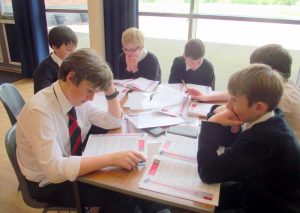
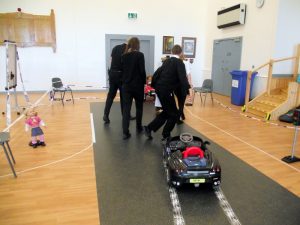 3. lower school kinematics and dynamics would be taught through the work of road safety.
3. lower school kinematics and dynamics would be taught through the work of road safety. - Lower school kinematics and dynamics would be taught through the theme of Road safety
- Students would use their knowledge to reach out to adult drivers to produce questionnaire,. the responses will be used to decide an approach to improved driver training.
- Thanks to those who helped Be a Road Crash Investigator
- Welcome to “Be a Road Crash Investigator”. We are here today because of some very special people who I need to thank. These are in chronological order.
1) Gregor Steele, who planted the seed for Road Safety during a week long Physics teacher event.
2) Inspector Neil Hewitson and his colleagues who have put days of work into this course, who have shared their expertise and have given of their time to make up some excellent resources, such as the scenarios, the computer simulations, the plots and the details of road crashes. Without them we wouldn’t have much knowledge about Road Safety. If you enjoy today please say your thanks by being a careful driver when you get to 17, it is the best pay back they can receive (but you can also say thanks too)
3) The technicians, Mr Rayen and Mr McEwen, and Dr Hargreaves who spent hours making tyre marks and putting equipment together and didn’t flinch or argue over my weird and wonderful requests.
4) The janitors and staff (supply staff) who spent hours setting up the cars and floor on Friday until 6pm.
5) Mrs Macpherson who showed me that I ought to have used publisher in the first place and not word and who made up version one of the booklets.
6) …and finally to the Royal Society who provided the funds to buy the materials that we can use as part of our course. There can’t be many schools in Britain with 4 ride-on cars, although I have no idea where we will store them!
![]()

